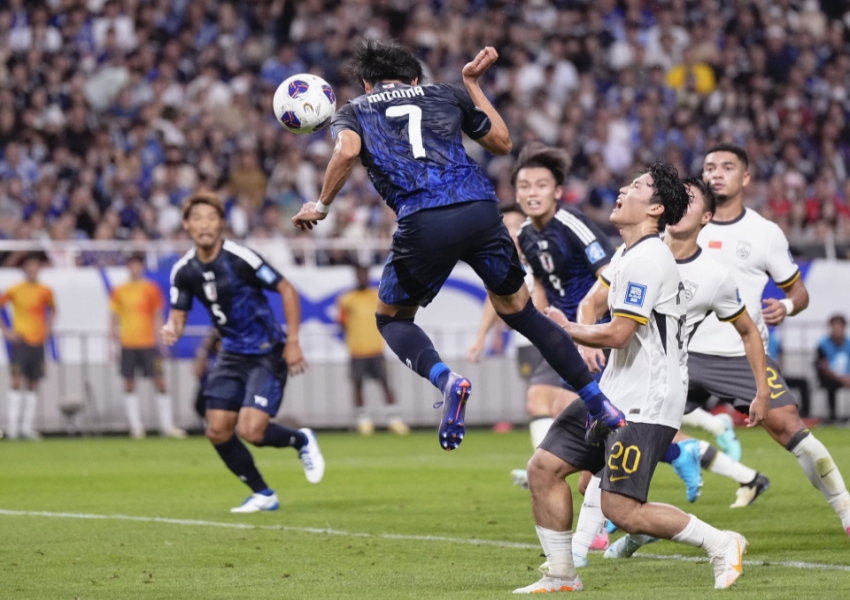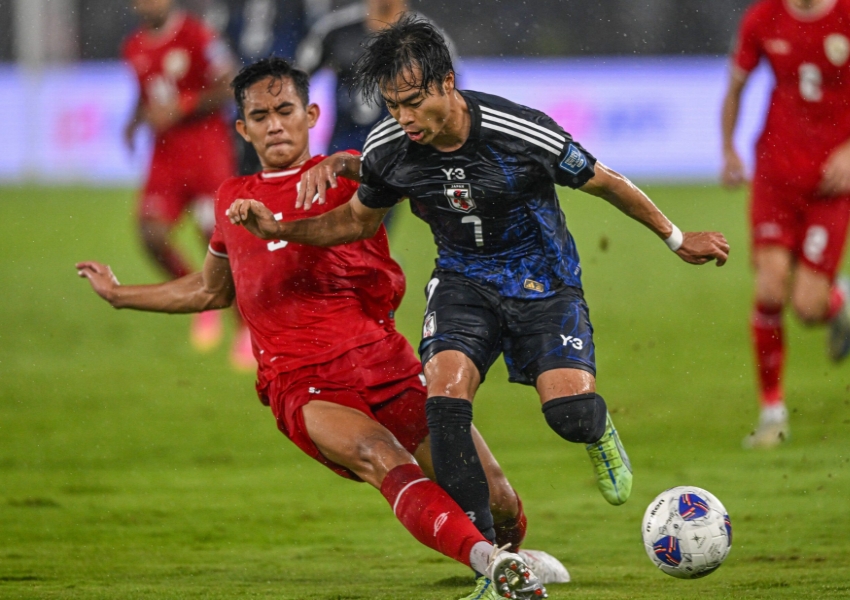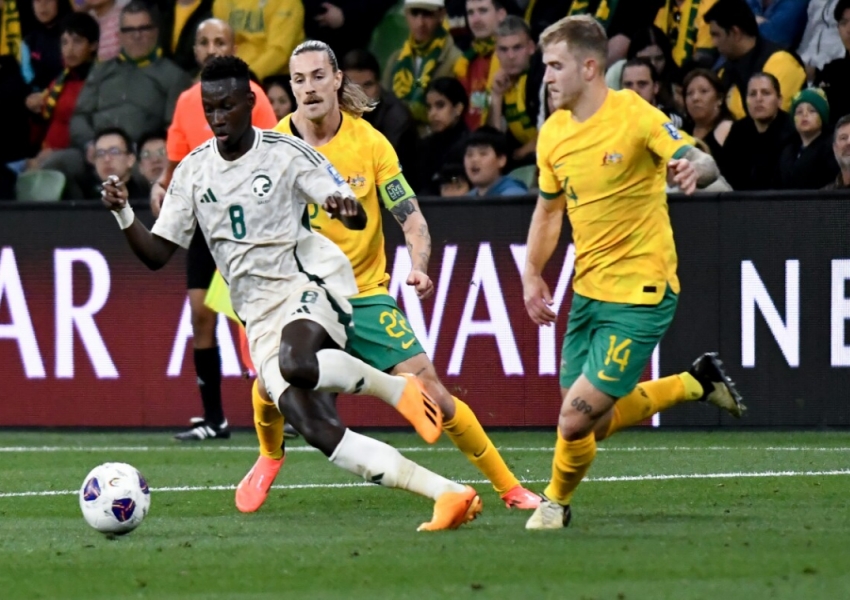AFC Asian Qualifiers Round 6: China’s Focus on Damage Control, Indonesia’s Technical Edge Against Saudi Arabia
The sixth round of the AFC Asian Qualifiers for the 2026 World Cup resumes on November 19, with critical fixtures shaping the standings. Despite back-to-back wins, China remains the team with the worst goal difference among the 18 squads, underscoring the challenges ahead. Their next clash against Japan calls for a measured approach, prioritizing damage control over offensive ambition. Meanwhile, Indonesia, coming off consecutive defeats against physically superior China and a dominant Japan, faces Saudi Arabia in a must-win encounter. With a roster bolstered by Dutch-naturalized players, Indonesia's technical and physical attributes could pose a challenge to the Saudis.

China vs. Japan: Cautious Optimism Amidst an Uphill Battle
China's recent form has been a rollercoaster ride, with dramatic outcomes defining their last two matches. A late winner against Bahrain salvaged a crucial victory after a similarly nerve-wracking result against Saudi Arabia. While these wins brought some relief, the underlying vulnerabilities in China’s squad remain glaring.

Against Bahrain, tactical missteps by the opposition played into China's hands. Bahrain's reliance on long balls and aerial duels was ill-suited to their physical disadvantage against China’s taller defenders. Unlike Japan, Bahrain lacked the ability to stretch China’s defensive line through rapid ball movement, allowing China’s backline to dominate aerial contests with near-perfect success rates.

Referee Adham from Jordan added an extra layer of tension to the match, particularly in the first half, with calls favoring the home side. Marginal fouls by towering defender Jiang Shenglong were penalized, while blatant handball protests from Bahrain players were met with verbal warnings at best. However, Adham's officiating evened out in the second half, evoking memories of China’s Asian Cup match against Qatar, where squandered opportunities proved costly.
Japan, in stark contrast, will bring a disciplined and dynamic approach. Fresh off a commanding 4-0 victory over Indonesia, they are well-equipped to exploit China’s vulnerabilities. In Jakarta, torrential rain early in the match alleviated the oppressive heat, enabling Japan to operate at a high tempo. Despite uneven pitch conditions, Japan’s short-passing game thrived, with Hidemasa Morita capitalizing on a monumental goalkeeping error early in the second half to secure a three-goal cushion.
China’s attacking options are further hampered by injuries. Zhang Yuning, who scored in both recent victories, and Li Lei are reportedly sidelined following intensive performances. Zhang’s physical presence, a key asset against Asian defenses, is now sorely missed. Wu Lei, while adept at exploiting weaker teams, often struggles against elite opposition. This disparity highlights why Zhang has historically been more effective in matches against stronger teams.
China’s realistic objective against Japan is to limit the damage. While Japan is likely to operate at a reduced intensity, even a one-sided contest could expose China’s structural issues.
Indonesia vs. Saudi Arabia: A Battle of Contrasting Strengths
Indonesia, the current bottom team in Group C, enters this round with a slim yet plausible path to contention. Despite their lowly standing, the group dynamics offer a glimmer of hope. With the exception of Japan, who are cruising toward qualification, the remaining teams are closely matched. A win for Indonesia in this round could reduce their gap from the automatic qualification spots to just one game—a scenario unimaginable for bottom-placed teams in other groups.
Indonesia’s journey thus far has been a mixed bag. A string of three consecutive draws against Saudi Arabia, Australia, and Bahrain initially established them as a competitive side. However, they faltered against China, suffering their first loss in the qualifiers, followed by a demoralizing defeat to Japan. Despite these setbacks, Indonesia’s goal difference remains three better than China’s, a telling statistic that highlights the latter’s defensive fragility.
Their first encounter with Saudi Arabia ended in a draw, showcasing Indonesia’s potential to disrupt stronger teams. Saudi Arabia, under the newly reappointed Hervé Renard, is aiming to regain its footing after a lackluster start to the campaign. Their previous match against Australia demonstrated defensive resilience, with Renard’s men stifling Australia’s attacking prowess despite playing away. A disallowed last-minute goal added drama but underscored Saudi Arabia’s newfound discipline under Renard’s guidance.
For Indonesia, the upcoming clash represents a chance to exploit Saudi Arabia’s vulnerabilities. The technical proficiency of Indonesia’s naturalized players, combined with their physical attributes, positions them as a formidable opponent. However, defensive lapses, particularly when attempting to play out from the back, have proven costly in previous matches.
Saudi Arabia, on the other hand, must capitalize on their defensive solidity to secure a vital three points. With a slim margin separating them from the automatic qualification zone, anything less than a win could jeopardize their campaign. However, Indonesia’s counter-attacking style, marked by swift transitions, could disrupt Saudi Arabia’s game plan, leading to a tightly contested affair.
Tactical Implications
Both matches are poised to be tactical battles, with contrasting styles shaping the outcomes. For China, the focus will be on defensive organization and minimizing errors, while Japan will look to assert control through quick ball movement and positional fluidity. Indonesia, meanwhile, will need to balance technical creativity with defensive discipline to counter Saudi Arabia’s structured approach.
As the qualifiers progress, these encounters will not only determine standings but also provide insights into the evolving dynamics of Asian football, where traditional powerhouses face increasing challenges from emerging sides.
Copyright Statement:
Author: mrfootballer
Source: Mrfootballer
The copyright of this article belongs to the author. Reproduction is not allowed without permission.
Recommended Blog
- Liverpool Intensifies Interest in €85 Million Star Thuram: French Forward Determined to Fulfill His Aspirations at Inter
- A Breakdown of Spalletti’s Six Key Players for Italy: Inter Quartet a Mixed Blessing
- Oaktree Capital Demands Major Salary Cuts at Inter Milan: Strategic Shift on the Horizon
- UEFA Nations League: Tonali Thrives in Italy’s Colors, England Clears Path to Promotion
- UEFA Champions League Matchday 4: Real Madrid’s Healing Process and Liverpool’s Reassurance Without Alonso
- Inter Milan’s Iranian Striker Faces Two-Month Goal Drought: Criticism Fair or Unjust?
- Serie A Matchday 11: Lazio on Fire, Parma Eye Solutions Against the Bottom Club
- Inter Milan's Triple Milestones: Assist King Shines as Europe’s Fourth Best, Adding Drama to Arsenal Showdown
- Premier League Round 10: Can Manchester United Maintain Their League Cup Firepower? Will Spurs Capitalize on Home Advantage?
- Inter Milan’s Declining Superiority: The Vanishing Impact of Substitutes
Hot Blog
- Man City’s 21-Year-Old Star Returns Home as a Hero! Receives $350,000 Mercedes, Gifts It to His Father
- AFC Champions League Quarterfinal Draw: Yokohama Faces CR7! Two High-Stakes Clashes as Japan’s Duo Battle in the Bottom Half
- 175 Days on the Sidelines! Barça’s 32-Year-Old Guardian Dreams of a Champions League Comeback
- English Media: Manchester United Will Win Premier League Title in 2028! History Will Repeat Itself, Two Teams Serve as Inspirations
- 4 AM Showdown: Barcelona's Revenge Match! Win = 3-Point Lead Over Real Madrid, Key Players Rested
- 0-2 Double Defeat! China National Team Stuck at 6 Points: No More Direct World Cup Hopes, Two Crucial Matches Ahead
- China National Football Team Drops 13.6 Points, Slips to 94th in FIFA Rankings: Syria Overtakes, New 9-Year Low
- 0-0 Draw! Japan 12 Shots, 2 Missed One-on-Ones: 8 Matches, 20 Points, Group Winner, Saudi Arabia Stuck at 10 Points in 3rd
- 4-1, Double Win Over Brazil! Argentina Celebrates: World Cup Qualification Secured, 4th Team Globally to Qualify
- Real Madrid Got Lazy: 7 Kilometers Less Running in UCL! Two Superstar Spectators While Barça Outruns Them All